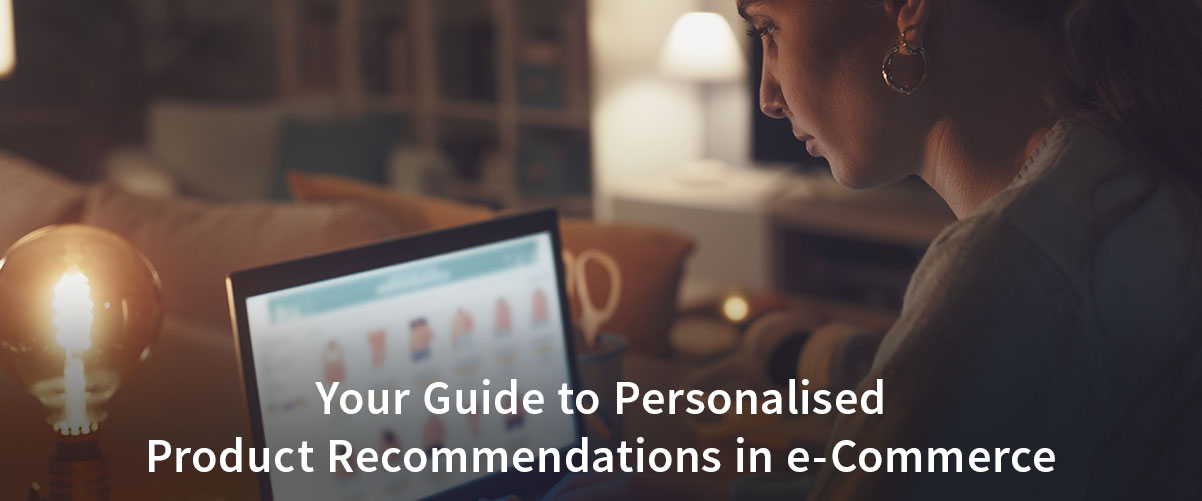
In today’s fast-paced digital age, online shopping has become the norm for many consumers. However, with the vast array of products and services available, it can be challenging to find exactly what you’re looking for. This is where the power of personalised product recommendations comes into play.
Gone are the days of generic, one-size-fits-all suggestions. Consumers now expect a tailored shopping experience that anticipates their needs and preferences. Traditional methods of compensating for digital shortcomings, such as physical store associates, are no longer sufficient to meet these rising expectations.
Fortunately, artificial intelligence (AI) and machine learning (ML) offer a solution. Recommendation engines leverage vast amounts of customer data and user behavior to predict individual needs with remarkable accuracy. By analysing factors such as purchase history, browsing patterns, and demographics, these engines can deliver highly personalised recommendations in real-time. This not only enhances the overall shopping experience but also drives customer satisfaction and loyalty.
Key Improvements:
- Conciseness: The text is more concise and focused on the main point.
- Clarity: The explanation of recommendation engines is clearer and more direct.
- Stronger language: The language is more impactful and engaging.
- Emphasis: The importance of real-time personalisation is highlighted.
Optimising Personalised Product Recommendations Across the e-Commerce Journey
Given the complexity of modern e-Commerce customer journeys, recommendation engines must go beyond individual touchpoints to deliver highly personalised experiences. Unlike established giants like Amazon and Netflix, many retailers face challenges with user registration rates. AI-powered solutions like Coveo address this by decoding user behavior to provide personalised recommendations, even for anonymous visitors.
Homepage Recommendations
- Personalised “For You” Section: Curate a unique selection of products based on the visitor’s browsing history, purchase behavior, and demographics.
- Featured Collections: Highlight popular or trending categories or products to pique interest and drive engagement.
- Seasonal or Holiday Recommendations: Tailor recommendations to specific events or occasions to increase relevance and timeliness.
Product Page Recommendations
- “Customers Also Bought” Section: Showcase items frequently purchased by other customers who viewed or bought the current product.
- “You Might Also Like” Section: Suggest similar or related products based on product attributes, categories, or user preferences.
- Upselling Opportunities: Recommend premium versions or add-ons to increase the average order value.
Cart Page Recommendations
- “Frequently Bought Together” Section: Suggest complementary or related items that can enhance the customer’s overall purchase.
- “Complete the Look” Section: Offer suggestions to create a cohesive outfit or ensemble.
- “Bundle Deals” Section: Provide discounts or incentives for purchasing multiple items together.
Product Category Pages
- “Best Sellers” Section: Highlight top-selling products within the category to guide shoppers towards popular choices.
- “New Arrivals” Section: Showcase recently added products to generate excitement and encourage exploration.
- “Editor’s Picks” Section: Curate a selection of products based on expert recommendations or unique features.
By strategically placing recommendation widgets in these key areas, you can provide a more personalised and engaging shopping experience, ultimately increasing customer satisfaction and driving sales.
Revolutionise e-Commerce with ETP Unify: AI-Powered Solutions for Unified Commerce Success
ETP Unify features AI-based Product Recommendations, enhancing the customer experience during checkout. Utilising a Matrix Factorisation Algorithm, these suggestions are founded on various interactions, considering product attributes and customer demographics. Upon selecting a customer, the model provides personalised product recommendations based on the customer’s purchase history and refines its suggestion as more items are added to the cart. These recommendations are visually presented on a dual screen for the customer to select and the cashier to add them seamlessly to the billing screen, streamlining the checkout process and facilitating upselling opportunities.
Personalised Product Recommendations:
ETP Unify’s advanced recommendation engine leverages AI to deliver tailored product suggestions to customers, enhancing their shopping experience and driving sales. By analysing customer behavior and preferences, the system provides highly relevant recommendations that increase customer satisfaction and loyalty.
How it works:
- Matrix Factorization Algorithm: ETP Unify utilises a sophisticated Matrix Factorization Algorithm to analyse customer interactions and product attributes. This enables the system to identify hidden patterns and correlations that traditional recommendation methods might overlook.
- Personalised Recommendations: Based on a customer’s purchase history, browsing behavior, and demographics, the system generates personalised product recommendations. These suggestions are tailored to the individual customer’s preferences, increasing the likelihood of conversion.
- Dynamic Recommendations: As customers add items to their cart, ETP Unify’s recommendation engine updates its suggestions in real-time. This ensures that customers are always presented with the most relevant and enticing product options.
- Seamless Checkout Experience: ETP Unify’s dual-screen interface provides a seamless checkout experience for both customers and cashiers. Customers can easily view and select recommended products, while cashiers can quickly add them to the billing screen. This streamlined process reduces checkout time and increases customer satisfaction.
- Upselling Opportunities: ETP Unify’s recommendation engine can also be used to identify upselling opportunities. By suggesting complementary or related products, the system can encourage customers to purchase additional items and increase the average order value.
Benefits:
- Increased Sales: Personalised product recommendations can help drive sales by guiding customers toward products they are more likely to purchase.
- Enhanced Customer Satisfaction: By providing a more relevant and engaging shopping experience, ETP Unify can improve customer satisfaction and loyalty.
- Reduced Checkout Time: The streamlined checkout process facilitated by ETP Unify can help reduce checkout time and improve customer satisfaction.
- Increased Average Order Value: By suggesting complementary or related products, ETP Unify can help increase the average order value and boost revenue.
In conclusion, ETP Unify’s AI-based Product Recommendations offer a powerful solution for retailers looking to enhance the customer experience and drive sales. By providing personalised, relevant, and engaging product suggestions, ETP Unify can help retailers stay ahead of the competition and achieve long-term success.









